13 March 2017 – Johannesburg: Building on its focus on high-level research and innovation for the mining sector, the University of the Witwatersrand’s School of Mining Engineering has seen another productive year with the graduation of five doctoral students.
According to Professor Richard Minnitt, JCI Professor of Mineral Resources and Reserves, the range and depth of the research is an exciting contribution to some key challenges faced by South Africa’s mining sector.
“This sustained, high level of quality research puts the Wits School of Mining Engineering at the cutting edge of mining innovation – in line with the university’s Wits Vision 2022 to become a top-100 institution,” said Professor Minnitt. “It also reflects our close partnership with mining companies, working with them to resolve issues and pursue opportunities.”
Seismic instability under Joburg CBD
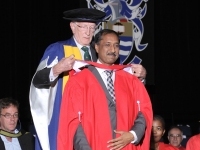
Sarfraz Ali
In his PhD, Sarfraz Ali highlighted the future risk to the safety and stability of buildings in the Johannesburg central business district arising from mining-induced seismicity. The risks arise from the many steeply-dipping geological formations under the CBD area, underlain by flooded and abandoned mines. He has applied advanced numerical modelling techniques to simulate various source mechanisms for estimating site-specific ground motions.
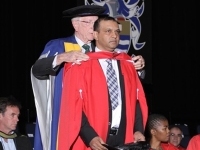
Ashok Kumar Damarupurshad
Deregulate precious metals?
Ashok Kumar Damarupurshad’s doctoral thesis is the first attempt to analyse the current debates on regulating the precious metals industries in South Africa. Noting that SA is the only country in the world – apart from the Russian Federation – that regulates the possession, trade and fabrication of gold and platinum group metals, Damarupurshad explores whether the local precious metals industry should be deregulated in the light of changed conditions.
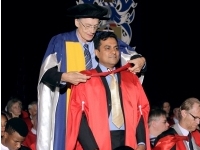
Tariq Feroze
Air flow for safer coal mines
In his PhD research, Tariq Feroze aimed to enhance safety in coal mines by applying a mathematical model to air flow rates close to the face of a heading – where the majority of methane explosions have been found to occur. His research revealed that Computational Fluid Dynamic’s advanced numerical code ANSYS Fluent was an appropriate tool to evaluate the face ventilation of a heading in a three-dimensional environment using full-scale models.
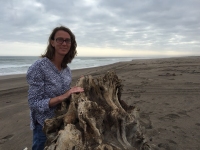
Jana Jacob
Diamond potential off Namibia’s coast
In her research, Jana Jacob focused on new methods of quantifying exploration risks in the absence of hard data, with reference to diamondiferous coastal deposits along the south‑western coast of Namibia.
“The submerged beaches within the 4 km coast parallel strip hold great potential for being highly diamondiferous,” said Jacob. Her thesis illustrated how virtual orebodies can be created, based on geological proxies as a basis to assess and rank different sampling and drilling strategies.
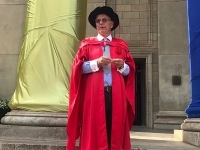
Rudiger Kersten
Improving pillar design
Investigating the bord and pillar design procedure in chrome and platinum mines, Rudiger Kersten concludes in his doctoral research that improvement is essential – as current methodologies “suffer from drawbacks that can be detrimental to the mining industry due to overdesign or rendering an excavation unsafe.”
His solution introduced the “mine stiffness” concept to determine the pillar load, “which automatically included the influence of the pillar and strata stiffness, excavation spans, pillar yield and failure.”